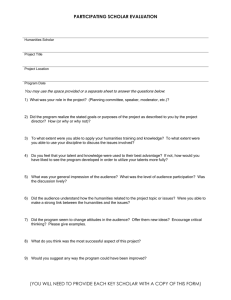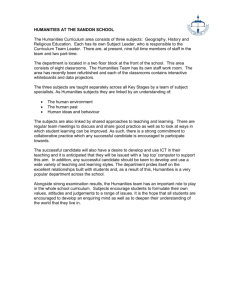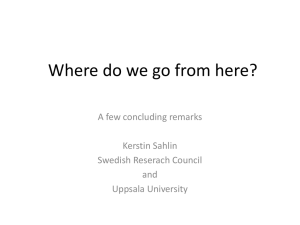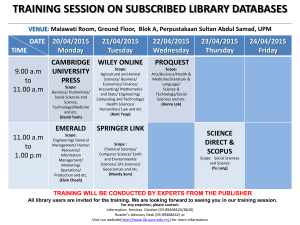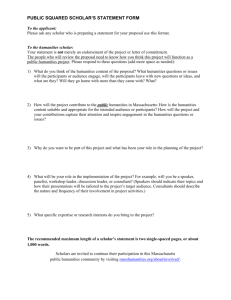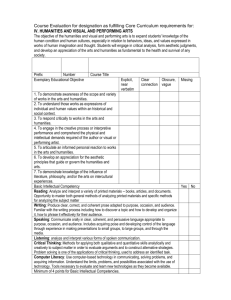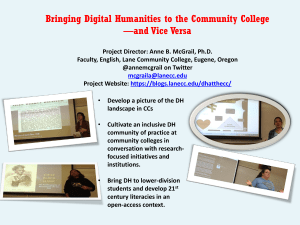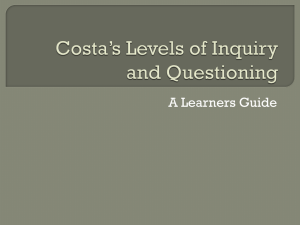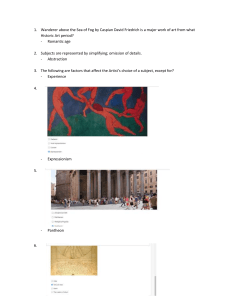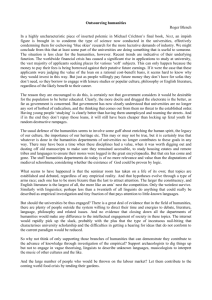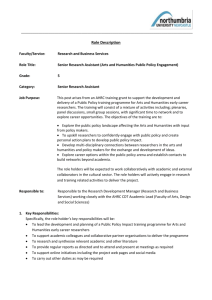Visual Thinking: The Art of Observation and Communication
advertisement
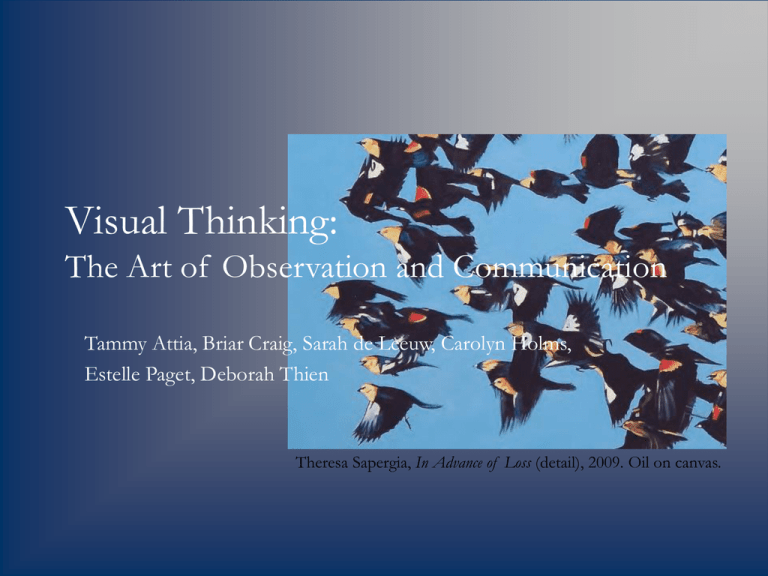
Visual Thinking: The Art of Observation and Communication Tammy Attia, Briar Craig, Sarah de Leeuw, Carolyn Holms, Estelle Paget, Deborah Thien Theresa Sapergia, In Advance of Loss (detail), 2009. Oil on canvas. Overview, Nov. 4th • Context of the course – Why we began with the visual arts as opposed to creative writing/narrative medicine – Why the course is unique to and needed in the north • Quick overview of visual arts, an artist, and linkages between teaching, doctoring, and conceptual arts – Discussion about the relevancy of creative work and the humanities to the practice of medicine • Summation and overview of how the evening unfolded – Discussion of introductory and participatory exercises • Lessons to be learned – Summation of evaluations – Discussion of preliminary feedback • Directions for future research and professional development opportunities Concepts we wanted participants to leave with • Thinking about art when teaching and practicing medicine • The relevance of art to medical practices and medical education • Art as informative about the human condition • Imaginative inquiry – an important medical tool and an important tool in medical education • Creative expression, creative response and creative communication as powerful teaching and diagnostic skills Drawing linkages The humanities focus on the study of subjects that lead to a better understanding of the human condition…[T]he humanities can offer medical students additional intellectual tools to help recontextualize their profession in a way that more fully honours its complexity, nuance, ambiguity and possibility. Shapiro et al. 2009. Academic Medicine Thinking with, and through, a conceptual artist Felix Gonzalez-Torres. Perfect Lovers. Felix Gonzalez-Torres. Untitled (Placebo) Why art and medical education/practice? “A sound grounding in the arts and humanities can enable an effectively critical, humane and ethical response.” Bolton, 2003. The Lancet We [may be] be able to use the humanities’ intricate and sympathetic knowledge about the human condition as well as its ability to examine pluralistic, experiential knowledge to help ensure a morally sensitive, narratively sound, and deeply professional clinical practice. Shapiro et al. 2009. Academic Medicine The greatest challenges for society…are all ones in which the arts and humanities, and science and technology need each other…[Medical] education is about understanding and imagination, as well as training and skills. 2003: Council for Science and Technology, UK How the evening unfolded… Introductory Exercises Linking Creative Arts to Medical Teaching and Practices Into the galleries… Looking to learn Thinking about what we’ve seen Summarizing, reflecting, and dinner Lessons to be learned 1. The method of learning was safe (non-threatening), comfortable & enjoyable. It was also very different from what physicians are used to: "It was pleasurable and enjoyable to learn in this manner. The information seeped in effortlessly and gently. It was refreshing..." 2. Physicians learned from each other: "I loved the ability to interact and chat and share." - Suggestion for improvement :"more painting with 3-4 people sharing their thoughts, ideas and perspectives and feelings." - Most effective part: "studying a work as a group" 3. There is potential that a series w/ other art forms will be well received: "I love the auditory poetry which made me visualize a painting in my imagination and made me feel sorrow at the death of the woman with breast cancer" - Suggestion for improvement: "run it as a series..." Lessons to be learned cont… 4. The highlight of the session for most was the exercise in front of the painting - most effective part: "absorbing the wholeness of the painting and sharing with my colleague." 5. Many people wanted more time in the session! - How could this conference have been improved: "longer" "Longer conference (e.g. day long) or multiple sessions might be beneficial." "An afternoon would be good!" 6. Acoustics in large hallway in gallery was troublesome to one person 7. Many found some transferrable skills, particularly in communication. "... a good way to encourage communication..." "This is a useful modality to learn communication and consultation skills" - Most effective part: " Sharing with one other person our experiences of the work... Tough to communicate our feelings about an image into words" Directions for future research and professional development opportunities • Developing additional “creative” professional development opportunities • Mixing learners in all stages of development • Evidencing the relevancy of creative arts to medical education and practice Contact us Sarah de Leeuw Northern Medical Program University of Northern BC 3333 University Way Prince George, BC V2N 4Z9 deleeuws@unbc.ca 1-250-960-5993
